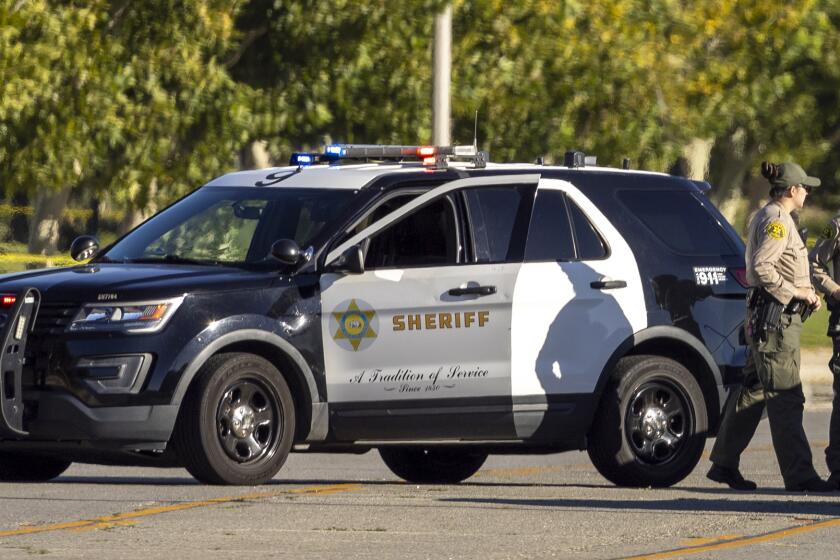Flamenco Group Kicks Up Its Heels
- Share via
At the Foyer studio at Orange Coast College, about 30 would-be gitanos and gitanas (Gypsies) crowd the dance floor to let their hair down.
Carefully imitating their teacher’s movements, the dancers do a mad taconeo --a series of heel steps that hammer the tablao , or wood floor. With guitar music blaring from the speakers, they shift their hips from side to side and lift their arms.
They become increasingly boisterous as they show off their wild footwork. The women lift their brightly colored, polka-dotted skirts, kicking them up then catching them with their hands, while the men follow with similar steps--without the skirts.
The leader of this wild bunch of flamenco enthusiasts is Lilia Llorens, a petite firecracker of a figure with a personable smile.
Since 1988, Llorens, 36, has taught two flamenco classes on Saturdays at OCC, a morning session covering technique and basic routines and an afternoon class that requires more skill. The class has attracted an eclectic group that includes an accountant, a computer technician, a mechanic, a Spanish teacher, several artists and even a few career dancers.
“It’s a real dance about real people. You can be fat, young, old, thin,” said student Sheila Schuster, 35, who has been studying flamenco for 14 years with her husband, John, a classical guitarist who is one of two guest accompanists in the class. “It’s about human ideas, all the expression and feeling we go through.”
Huntington Beach resident Kathy Rios agreed that learning flamenco is a creative outlet to release emotions and express passions.
“With flamenco it releases an inner fire,” Rios said. “You feel euphoric, charged up after class.”
Born in Cuba, Llorens moved to Southern California with her family when she was 16. She continued her training in ballet and Spanish regional and classical dance while learning flamenco under the direction of old masters then living in Los Angeles.
Llorens’ students said her success lies with her approach of not only teaching the dance, but the culture and history behind it, too.
“I don’t want to keep it as just a dance class,” Llorens said. “I want them to learn about other aspects of Spanish life, the cooking, the culture. That way they learn more about what flamenco is.”
That holistic approach includes field trips, such as a recent bus ride to Pasadena’s Ambassador Theater to see Jose Molinas’ troupe, and an end-of-semester trip to a Spanish restaurant that features a flamenco show. Students also gather for a juerga-- a party that includes a potluck, a live jam session and dancing.
“Students can get up and show off what they have learned without the pressure,” Llorens said.
She also shows films and takes orders for books from Spain because “the more they see about the culture, the more they’ll know” about the dance, she said.
More to Read
Sign up for Essential California
The most important California stories and recommendations in your inbox every morning.
You may occasionally receive promotional content from the Los Angeles Times.













